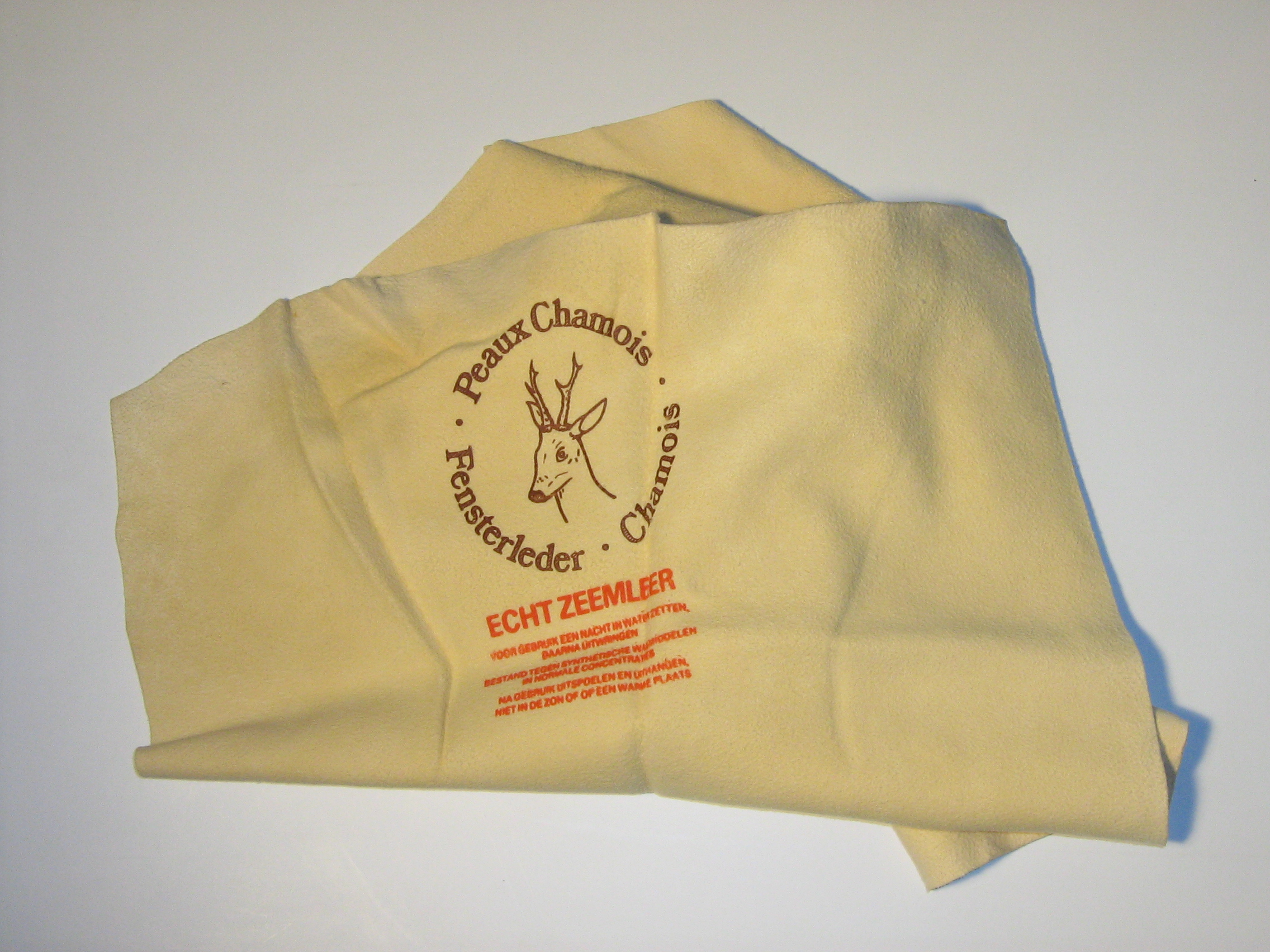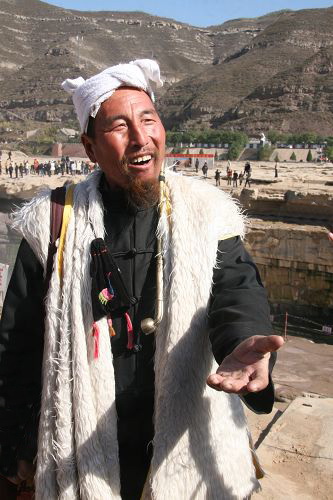|
Sheepskin
Sheepskin is the hide of a sheep, sometimes also called lambskin. Unlike common leather, sheepskin is tanned with the fleece intact, as in a pelt.Delbridge, Arthur, "The Macquarie Dictionary", 2nd ed., Macquarie Library, North Ryde, 1991 Uses Sheepskin is used to produce sheepskin leather products and soft wool-lined clothing or coverings, including gloves, hats, slippers, footstools, automotive seat covers, baby and invalid rugs and pelts. Sheepskin numnahs, saddle pads, saddle seat covers, sheepskin horse boots, tack linings and girth tubes are also made and used in equestrianism. The fleece of sheepskin has excellent insulating properties and it is also resistant to flame and static electricity. Wool is considered by the medical profession to be hypoallergenic. Sheepskin is a natural insulator, and draws perspiration away from the wearer and into the fibers. There, it traps between 30 and 36 percent of its own weight in moisture, and it is for this reason that sheepskin ... [...More Info...] [...Related Items...] OR: [Wikipedia] [Google] [Baidu] |
Sheepskin Boots
Sheepskin boots are boots made from sheepskin. The wool on sheepskin has good insulating properties and so such boots are commonly worn when it is cold. Sheepskin boots have been worn and used in colder climates since at least 500 B.C. as a Mummy in Subashi, China has been uncovered wearing a pair. In ancient Greece, Plato wrote that most people would wrap their feet in warm felt and sheepskin during the hard winters in Potidaea. In the 19th century, traveller William Knight observed sheepskin boots being worn by the people of Tibet. Women dancers wore boots of variegated colours while male horsemen wore large boots along with heavy sheepskin trousers and coats. The Inuit of the Arctic use sheepskin to make warm boots which have names such as ''kamipak'' or ''marnguaq''. These are oiled to make them waterproof. In the Russian winter, the peasants often wore high boots lined with sheepskin to stay warm. Sheepskin boots were made in Glastonbury by the Quaker firm of Morlands ... [...More Info...] [...Related Items...] OR: [Wikipedia] [Google] [Baidu] |
Kozhushanka
The kozhushanka ( uk, кожушанка) is a traditional Ukrainian sheepskin coat. Kozhushankas were winter attires worn by women, typically in the middle Dnieper River region, including the Left-Bank and steppe areas, and also in the Lemko region, particularly in the central regions. They are thought to have originated in the Cossack Hetmanate period. The coats varied in color from region to region. In the Lemko areas, the Kozhushanka was worn on top of the blouse. It was designed to resemble the traditional Lemko korset bodice, but without wedges at the bottom. It was made of cherry-colored velvet, lined by homemade coarse cloth or linen. The edges were trimmed with black sheepskin or other differently dyed material. It was embellished by a couple of bouquets of various color and, like most Ukrainian clothing of the time, embroidered, particularly on the chest. In Canada, Ukrainian immigrants were often singled out by their sheepskin coats, and detractors such as politician ... [...More Info...] [...Related Items...] OR: [Wikipedia] [Google] [Baidu] |
Cuman People
The Cumans (or Kumans), also known as Polovtsians or Polovtsy (plural only, from the Russian exonym ), were a Turkic nomadic people comprising the western branch of the Cuman–Kipchak confederation. After the Mongol invasion (1237), many sought asylum in the Kingdom of Hungary, as many Cumans had settled in Hungary, the Second Bulgarian Empire playing an important role in the development of the state. Cumans played also an important role in (The Byzantine Empire, the Latin Empire, and the Nicaea Empire) Anatolia . Related to the Pecheneg, they inhabited a shifting area north of the Black Sea and along the Volga River known as Cumania, from which the Cuman–Kipchaks meddled in the politics of the Caucasus and the Khwarazmian Empire. The Cumans were fierce and formidable nomadic warriors of the Eurasian Steppe who exerted an enduring influence on the medieval Balkans. They were numerous, culturally sophisticated, and militarily powerful. Many eventually settled west o ... [...More Info...] [...Related Items...] OR: [Wikipedia] [Google] [Baidu] |
Chamois Leather
Chamois leather () is a type of porous leather, traditionally the skin of the chamois (''Rupicapra rupicapra''), a type of European mountain goat, but today made almost exclusively from the flesh split of a sheepskin. United Kingdom The British Standard BS 6715: 1991 defines chamois leather as: "Leather made from the flesh split of sheepskin or lambskin, or from sheepskin or lambskin from which the grain (the top split) has been removed by frizing, and tanned by processes involving oxidation of marine oils in the skin." United States In the United States, the term ''chamois'' without any qualification is restricted to the flesh split of the sheep or lambskin tanned solely with oils (US Federal Standard CS99-1970). Chamois leather is often counterfeited with goat or pig skin, the practice of which is a particular profession called by the French ''chamoiser''. History The term ''chamois'' as used to refer to specially-prepared leather originated sometime before 1709, referr ... [...More Info...] [...Related Items...] OR: [Wikipedia] [Google] [Baidu] |
Shearling Coat
Shearling coats are made from processed lambskin, sheepskin, or pelt. This "shearing" process creates a uniform depth of the wool fibers for a uniform feel and look. Shearling coats and garments are made from pelts by tanning them with the wool of uniform depth still on them. The result is a soft, natural fleece material that is heavy due to thickness of outer skin and degree of fur on the inside, which is quite dense. The length of the sheep fur can be fairly long, but it is typically cropped short to about . Most find these coats to be extremely comfortable and warm. Due to the high quality and uniqueness of shearling, coats and garment are considered luxurious. Sheepskin and Shearling are synonymous. The outer must be sheepskin to be Shearling on the inside. See also *Sheepskin boots Sheepskin boots are boots made from sheepskin. The wool on sheepskin has good insulating properties and so such boots are commonly worn when it is cold. Sheepskin boots have been worn and u ... [...More Info...] [...Related Items...] OR: [Wikipedia] [Google] [Baidu] |
Zamarra (coat)
A zamarra is a sheepskin coat worn by Spanish shepherds. In the 1830s, Edward Bell Stephens strongly recommended that visitors to the Spanish Basque region purchase the zamarra, which he described as made from black Andalusian astrakhan lined with white sheepskin. It was recommended as an ideal travelling jacket, serviceable in both heat and cold, and very water-resistant. The academic garment also worn as a vestment, the chimere is closely related to the zamarra, from which it evolved during the Middle Ages. A similar coat is used in Alentejo, southern Portugal Portugal, officially the Portuguese Republic ( pt, República Portuguesa, links=yes ), is a country whose mainland is located on the Iberian Peninsula of Southwestern Europe, and whose territory also includes the Atlantic archipelagos of th ..., and called ''samarra''. It is made of wool, with a furry collar, and the usual colours are brown, dark blue or black. See also * References Spanish clothing Portugu ... [...More Info...] [...Related Items...] OR: [Wikipedia] [Google] [Baidu] |
Chuba
A chuba is a long sheepskin coat made of thick Tibetan wool worn by many of the nomadic peoples of high altitude in the cold mountains of Tibet. The traditional sherpa clothing is distinctive to solu-khumba, the basic garment of the sherpas; the ''chuba'' originated in the cold climate of Tibet. A chuba is a warm ankle-length robe that is bound around the waist by a long sash. Its upper portion becomes a large pocket for everything from money to bowls. In the past, chubas were made from strips of hand-woven woollen cloth; they were originally the un-dyed white colour of the sheep's wool from Tibet. More recently, black or brown dyes have been used. On trading trips to Tibet, people often wore sheep skin chubas, jackets or pants. See also * Tibetan clothing * Bakhu * Chab chab * Kira (Bhutan) The kira ( dz, དཀྱི་ར་, དཀྱིས་རས་, translit=dkyi-ra, dkyis-ras) is the national dress for women in Bhutan. It is an ankle-length dress consisting of a re ... [...More Info...] [...Related Items...] OR: [Wikipedia] [Google] [Baidu] |
Hide (skin)
A hide or skin is an animal skin treated for human use. The word "hide" is related to the German word "Haut" which means skin. The industry defines hides as "skins" of large animals ''e.g''. cow, buffalo; while skins refer to "skins" of smaller animals: goat, sheep, deer, pig, fish, alligator, snake, etc. Common commercial hides include leather from cattle and other livestock animals, buckskin, alligator skin and snake skin. All are used for shoes, clothes, leather bags, belts, or other fashion accessories. Leather is also used in cars, upholstery, interior decorating, horse tack and harnesses. Skins are sometimes still gathered from hunting and processed at a domestic or artisanal level but most leather making is now industrialized and large-scale. Various tannins are used for this purpose. Hides are also used as processed chews for dogs or other pets. The term "skin" is sometimes expanded to include furs, which are harvested from various species, including cats, m ... [...More Info...] [...Related Items...] OR: [Wikipedia] [Google] [Baidu] |
Sheep Skin For Sale
Sheep or domestic sheep (''Ovis aries'') are domesticated, ruminant mammals typically kept as livestock. Although the term ''sheep'' can apply to other species in the genus ''Ovis'', in everyday usage it almost always refers to domesticated sheep. Like all ruminants, sheep are members of the order Artiodactyla, the even-toed ungulates. Numbering a little over one billion, domestic sheep are also the most numerous species of sheep. An adult female is referred to as a ''ewe'' (), an intact male as a ''ram'', occasionally a ''tup'', a castrated male as a ''wether'', and a young sheep as a ''lamb''. Sheep are most likely descended from the wild mouflon of Europe and Asia, with Iran being a geographic envelope of the domestication center. One of the earliest animals to be domesticated for agricultural purposes, sheep are raised for fleeces, meat (lamb, hogget or mutton) and milk. A sheep's wool is the most widely used animal fiber, and is usually harvested by shearing. In Common ... [...More Info...] [...Related Items...] OR: [Wikipedia] [Google] [Baidu] |
Kozhukh
A kozhukh ( uk, кожух) is a traditional Ukrainian fur coat. Generally worn in the winter, the kozhukh was normally made of sheepskin, sometimes decorated with embroidery and with leather, cords, tassels, and other accessories. They were tight at the waist, sometimes very long. There were two main variations, those with straight backs and those with detached backs. Variations of the kozhukh were worn throughout Ukraine, but it was primarily used in the middle Dnieper River region, including the Left Bank and steppe areas, and in Polissya. They were especially popular during the Cossack Hetmanate period, though they were also worn during the Kievan Rus' period. In the last decade, coats based on the traditional Kozhukh have become fashionable again in Ukraine.Viktoria Herasymchuk. The Ethnic Look - What Ukrainians Wore and Are Wearing Today'. The Day, 24 January 2006 Popular culture In History Channel's production ''Vikings Vikings ; non, víkingr is the ... [...More Info...] [...Related Items...] OR: [Wikipedia] [Google] [Baidu] |
Slippers
Slippers are light footwear that are easy to put on and off and are intended to be worn indoors, particularly at home. They provide comfort and protection for the feet when walking indoors. History The recorded history of slippers can be traced back to the 12th century. In the West, the record can only be traced to 1478. Slippers in China date from 4700 BCE. They were made of cotton or woven rush, had leather linings, and featured symbols of power, such as dragons. Native American moccasins were also highly decorative. Such moccasins depicted nature scenes and were embellished with beadwork and fringing, their soft sure-footedness made them suitable for indoors appropriation. Inuit and Aleut people made shoes from smoked hare-hide to protect their feet against the frozen ground inside their homes. Fashionable Orientalism saw the introduction into the West of designs like the baboosh. Victorian people needed such shoes to keep the dust and gravel outside their homes. Fo ... [...More Info...] [...Related Items...] OR: [Wikipedia] [Google] [Baidu] |
Suedehead (subculture)
The suedehead subculture was an early-1970s offshoot of skinhead subculture in the United Kingdom and Ireland. Although sharing similarities to 1960s skinheads, suedeheads grew their hair longer and dressed more formally. Although often working class like skinheads, some had white collar jobs. A female suedehead was a ''sort''. Suedeheads wore brogues, loafers or basketweave Norwegians instead of heavy boots. Suedeheads wore suits (especially in check patterns such as Prince of Wales and dogtooth) and other dressy outfits as everyday wear instead of just at dancehalls. Crombie-style overcoats and sheepskin coats became common. Most London Suedeheads wore a silk handkerchief in the chest pocket of their Crombie, which also had a circular tie-pin through the Crombie and the handkerchief. Shirts often had large button-down collars, usually either pointed or rounded, called Butterfly collars. The top shirts were Ben Shermans with a back pleat and top loop. Early on the most co ... [...More Info...] [...Related Items...] OR: [Wikipedia] [Google] [Baidu] |




.jpg)



.jpg)

